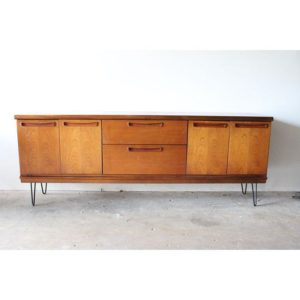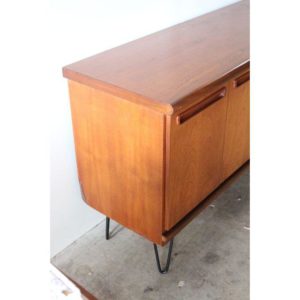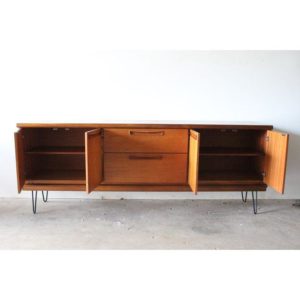Sideboards are an immensely useful piece of furniture we’d like to see more of. Sideboards were more common when built-in shelving and storage was less common in houses. Traditionally used in association with dining, sideboards would house anything from serving sets to dining linens. They may be less common now, but they’re just as relevant, if not more.
Built in furniture has its place, but with our ever-changing lives there’s something to be said for mobile furniture. As our lives change, we’re thankful for furniture that can serve multiple functions around the house. Sideboards provide a large horizontal space for a multitude of uses. It also provides lots of out-of-the way storage. Sticking with traditional usage, sideboards can store silverware and place settings in a kitchen. A living room sideboard can house entertainment paraphernalia, books, and games.
Sideboards are also great in bedrooms, guest rooms, and larger hallways and entryways. Okay, you get the idea. But what we’re getting at, is that they are available to serve you. They can suit your needs and they change their purpose as the flow of your life changes. Refurbishing a sideboard with hairpin legs gives you the opportunity to have an immensely functional piece of furniture at the height you want in the location that works for you. This sideboard by Chairish has been restored from its original glory. It’s extra-long length makes it an ideal surface for daily use with plenty of storage for all the things you want easily accessible.
Another not about large pieces of furniture like this. This is a perfect example of why we build our hairpin legs out of solid, cold-rolled steel. A hollow metal hairpin leg, or one made from aluminum isn’t a good fit for a heavy piece of furniture like this. Stick with solid steel hairpin legs if you’re building or refurbishing a solid reliable sideboard like this one.



